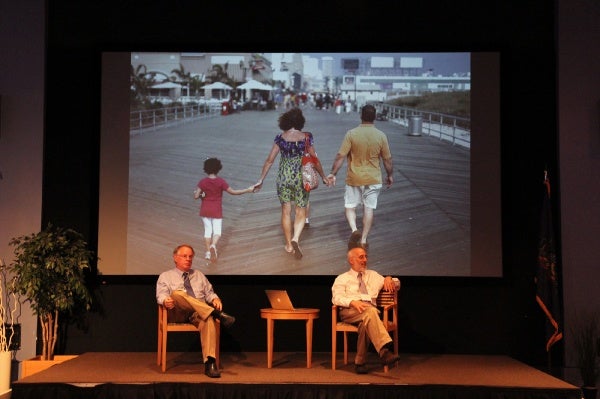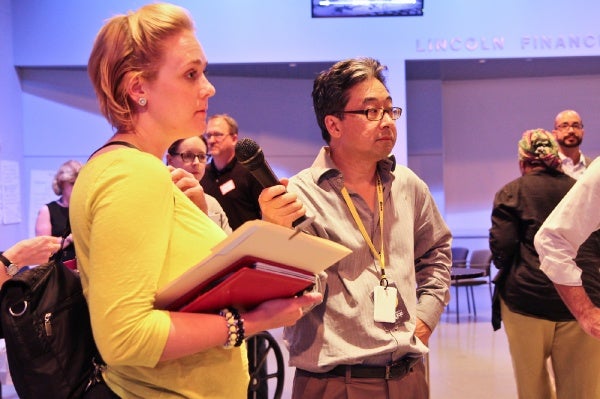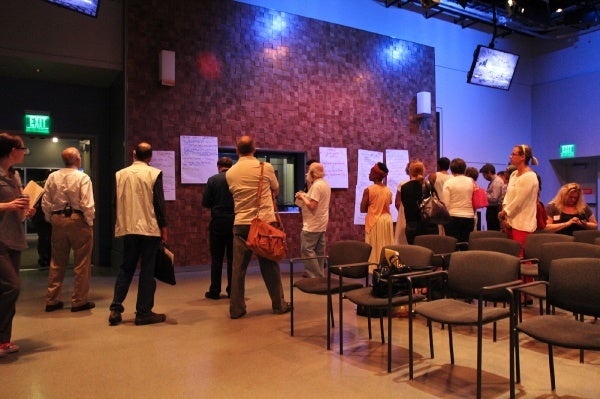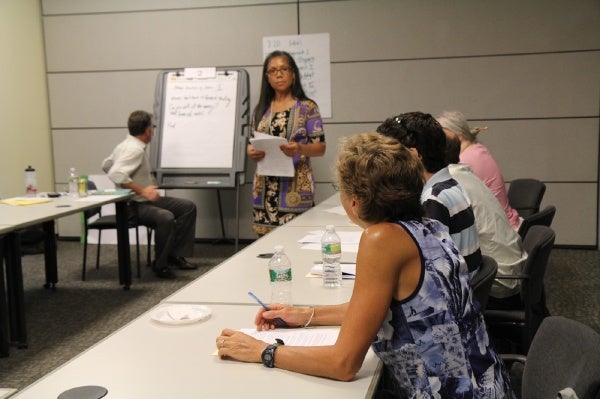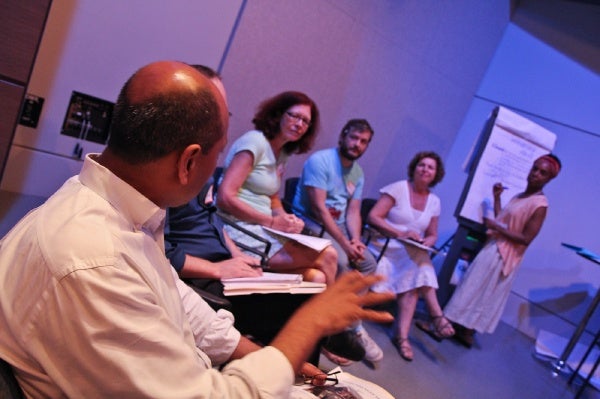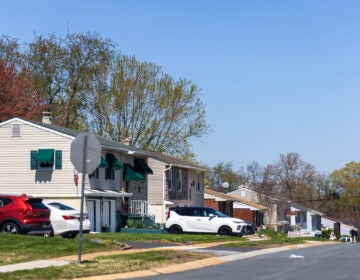Rethinking the Shore forum zeroes in on better planning, leadership
It was a night for expressing hopes, and the skepticism that undermines them.
About 60 people gathered at WHYY Monday night for the first event in our summer-long civic dialogue project: “Ready for Next Time? Rethinking the Shore After Sandy.”
The group divided into four smaller breakout sessions, each led by a moderator from the Penn Project for Civic Engagement and using an issue guide we prepared. Folks talked through the long-term choices facing New Jersey as it responds to the challenges left behind by the storms known as Irene and Sandy.
Four more forums will be held in Jersey Shore communities in July and August. Here’s a rundown of the forum dates and sites and frequently asked questions about this unusual forum format.
Here’s the online registration page, if you’d like to attend one of the coming events, as we hope you will.
Back to Monday. The citizens who attended were mostly Philadelphia area residents who either own second homes on the Jersey Shore, or visit there regularly.
A Storify summary of the tweets done during the session can be found on this page.
As the dialogue developed and moderators jotted down notes on easel pads, I noticed that people with backgrounds in planning and architecture were probably disproportionately represented in the discussion.
Perhaps that’s why a common theme in the groups was the need for more regional and long-term planning. But that wish would no sooner be expressed than it would be dashed by someone noting that master planning clashes with New Jersey’s habit of local control, and often with the self-interest of the politicians who’d have to make it happen.
Another cross-cutting theme was the sense that New Jersey is not getting the leadership it needs to respond wisely to the storm, partly (some alleged) because of an integrity deficit, because politicians put narrow self-interest ahead of community interest.
A point of common ground was that rebuilding the dunes is the right thing to do, with most people feeling that the community benefits of stronger dunes outweighs any inconvenience to individual property owners.
One person struck a paradoxical note of hopefulness, saying, “This sounds odd but I’m almost glad the storm hit here, in New Jersey, rather than somewhere else, because we’ve got amazing people here in this state, with all kinds of knowledge that could help us be smart in what we do. We just need leaders who’ll listen.”
The forum groups talked their way through an issue guide we prepared, with some advice from our partners in the project, including Jersey Shore Hurricane News, Creative New Jersey, Sustainable Jersey and Citizens Campaign.
The issue guide (see related link) aimed at distilling into three basic approaches, or perspectives, the many arguments and ideas about storm response that ricochet around the Garden State.
Here are the capsule summaries the issue guide offers of the core thinking of three approaches:
1 – Rebuild and Prepare
Given our investment in the Shore, including its role in the traditions, dreams and lifestyles of millions of people, it’s unthinkable not to rebuild what was lost or damaged. We should focus on repairing damage, rebuilding homes and businesses, and reviving the Shore economy as quickly as possible. Individual homeowners and businesspeople who suffered losses deserve help, with little red tape.
The storms of the last two years were probably outliers, so it’s important to respond, but not overreact. The storms did point up some serious flaws in preparedness and emergency communications. These should be fixed before the next storm hits; social media and technology can be big helps here.
2) Rethink and Adapt
Our economic and emotional investments in the shore are indeed deep, but simply rebuilding the Shore the way it was puts them at needless risk. We can’t count on the nation’s taxpayers to come to our aid again, especially if we show we’ve learned nothing from this storm. Through smart regional planning, we can mitigate risk while preserving most of what we love about the Shore, including its economic vitality.
We must accept that in some areas it is folly to rebuild – or at least to rebuild in the same way. Individual property owners don’t have an unlimited right to do whatever they want, if their actions put the rest of the community at risk. And we can learn a lot from how oceanfront communities elsewhere have changed development patterns, building codes and infrastructure to limit harm from hurricanes.
3 – Restore and Retreat
Recent storms teach that all our investments in the Shore are at serious risk. To avoid catastrophes more costly than Sandy in the near future, we must begin strategically to reduce the human footprint at the ocean’s edge. In other words, move housing, commerce and entertainment steadily inland through a planned retreat that will be the work of a generation.
Obviously, the impact on property rights and individual livelihoods must be gauged and compensated. But narrow slivers of sand were never meant to be built upon as thickly as we do. They’re called barrier islands for a reason, and by mistreating them (and ignoring the ocean’s power) we put inland investments at risk. They are also places of great beauty, peacefulness and ecodiversity that deserve to be restored and protected. That should become our generational goal.
How the dialogue went
The crowd at WHYY Monday mostly seemed to find Rethink and Adapt to the most attractive option. Many liked Rebuild and Prepare’s respect for the emotional investment people have in the Shore, and all supported its focus on emergency preparedness.
Restore and Retreat spoke to many with its reverence for the beauty and fragility of barrier islands, and its hard-headed insistence that more storms of Sandy’s power would come.
But few in this group seemed able to get their minds around its mental picture of a Shore with many, many fewer houses, boardwalks and restaurants than are there now.
What do you think about all this? Which approach sings to you? Which arguments pro and con make the most sense to your ears?
We’d love to hear your voice. Join the conversation.
WHYY is your source for fact-based, in-depth journalism and information. As a nonprofit organization, we rely on financial support from readers like you. Please give today.



